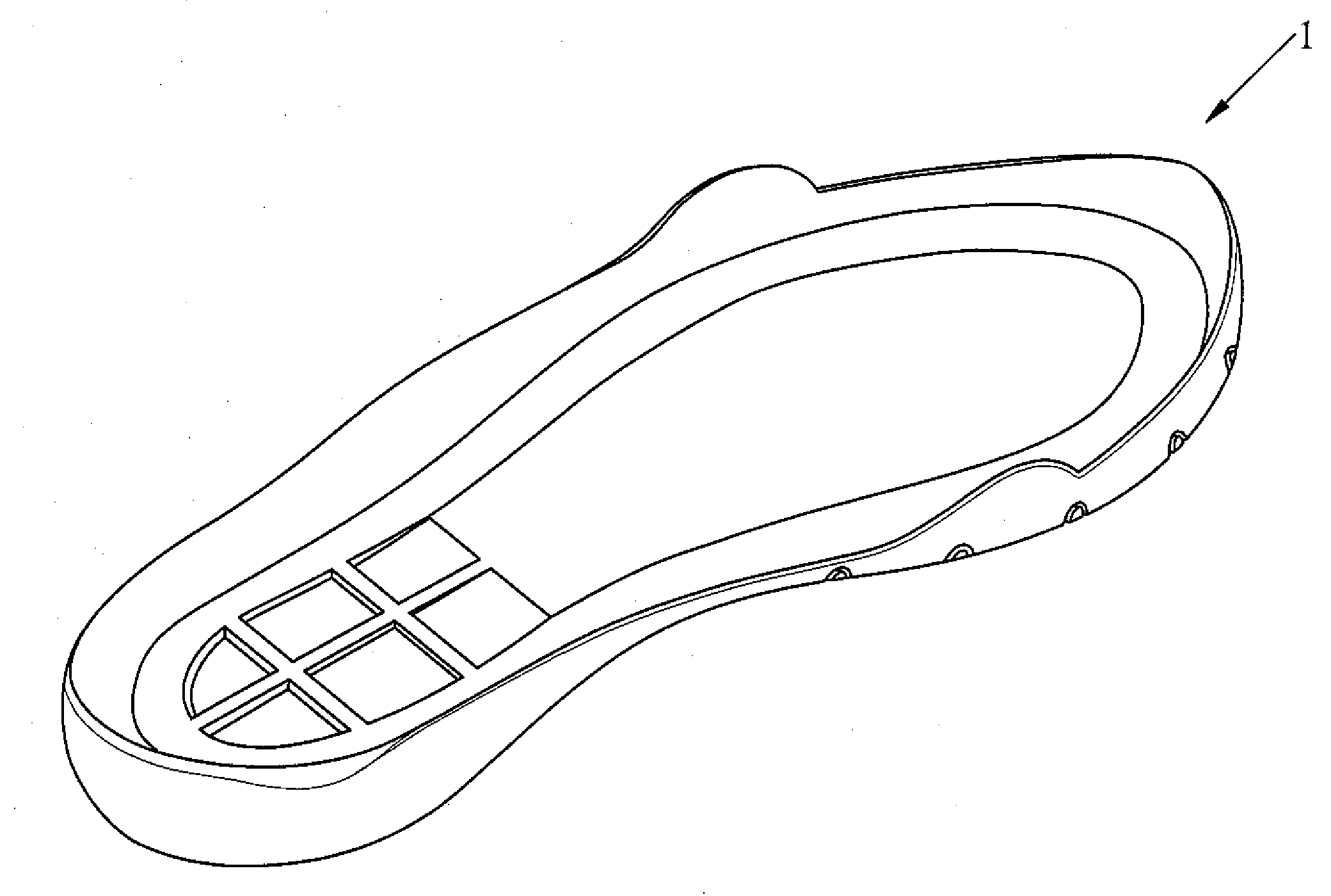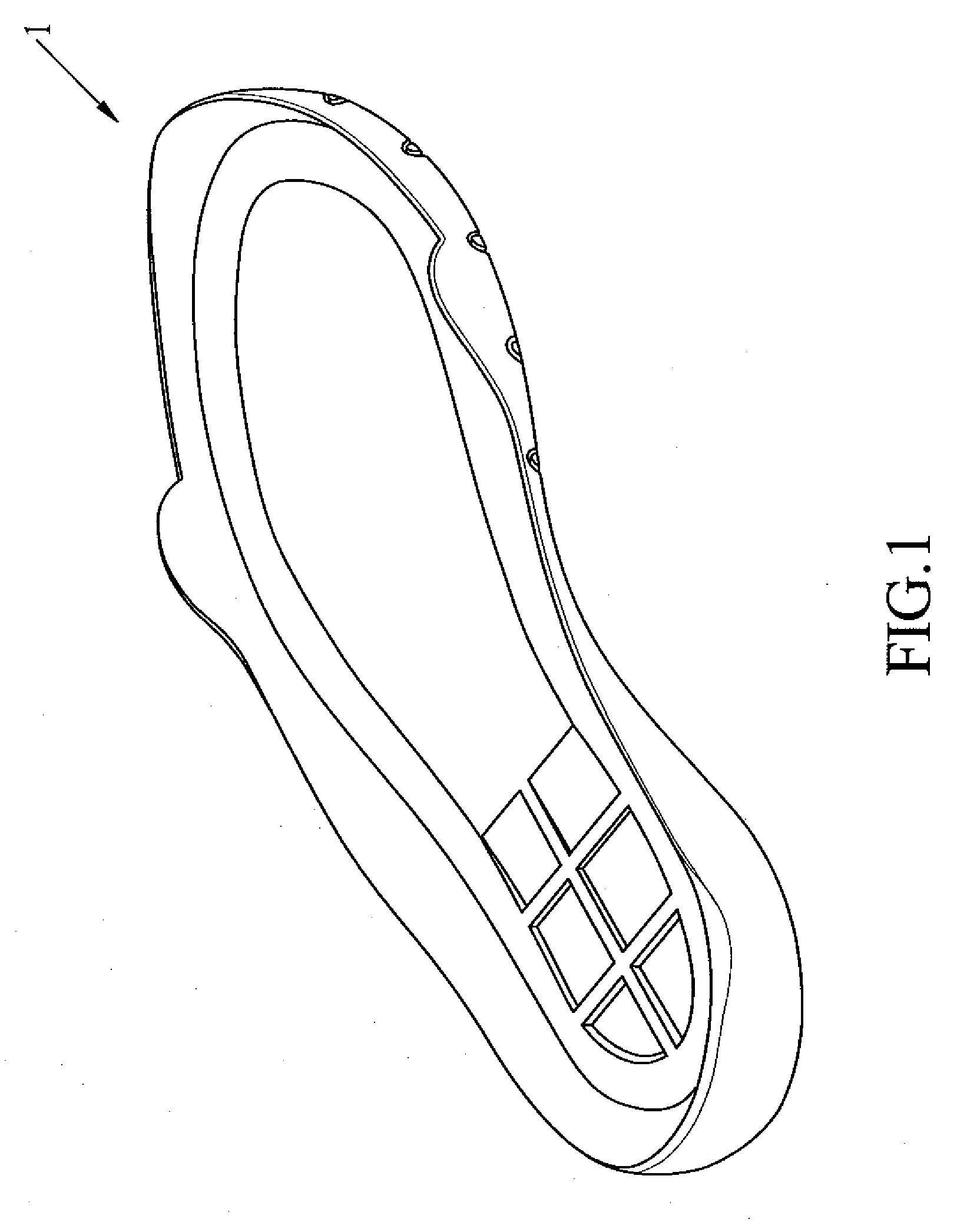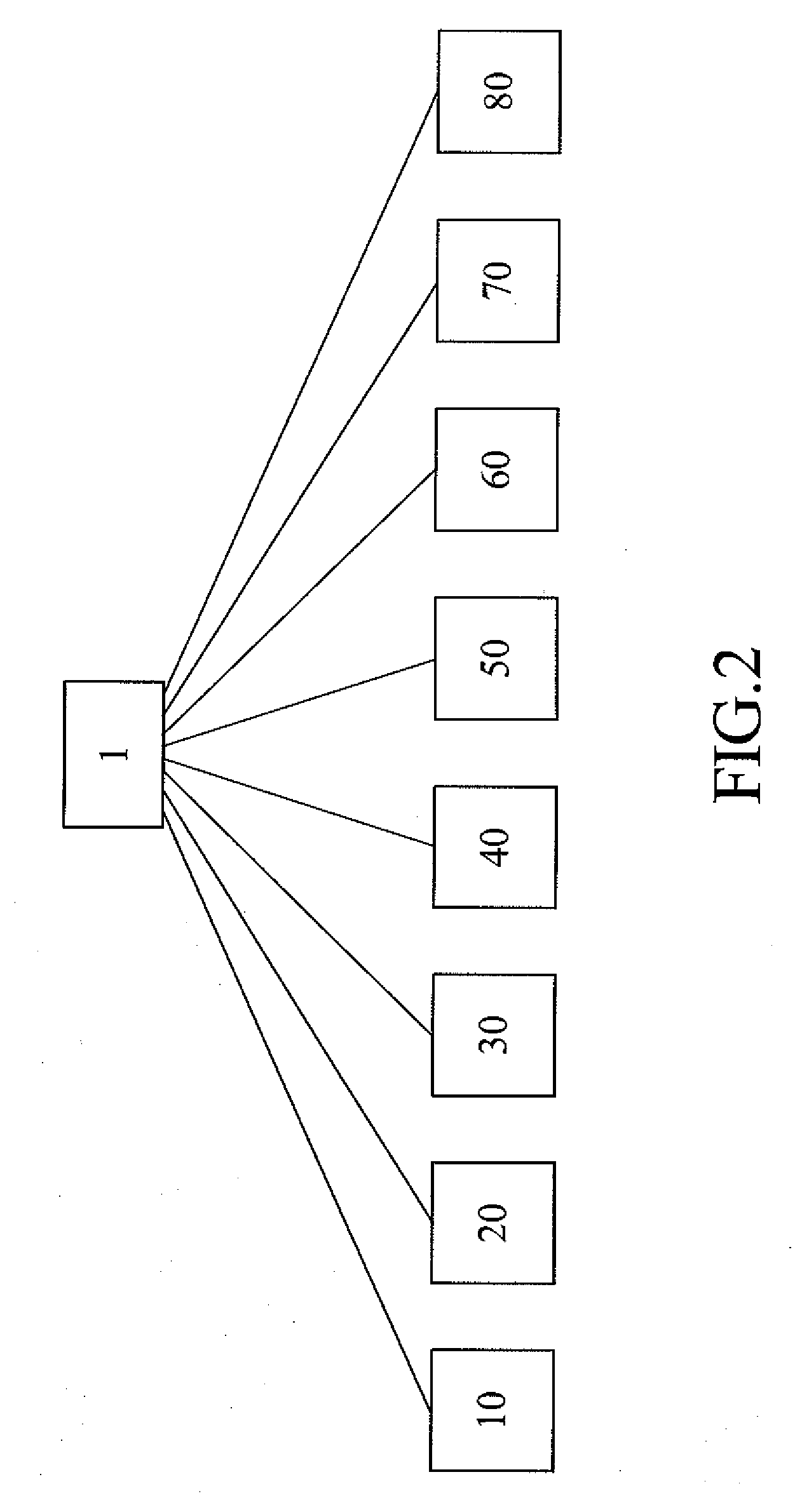Material for Manufacturing Environment Friendly Outsoles
- Summary
- Abstract
- Description
- Claims
- Application Information
AI Technical Summary
Benefits of technology
Problems solved by technology
Method used
Image
Examples
Embodiment Construction
[0016]Referring to FIGS. 1 and 2, a material for manufacturing an environment friendly outsole 1 in accordance with a preferred embodiment of the invention comprises a first composition 10 of TPE (thermoplastic elastomer), a second composition 20 of silica, a third composition 30 of talcum powder, a fourth composition 40 of white oil, a fifth composition 50 of PS (polystyrene), a sixth composition 60 of HDPE (high density polyethylene), a seventh composition 70 of rice chaff powder, and an eighth composition 80 of SEBS (styrene ethylene butene styrene). Each of above components will now be described in detail below.
[0017]The first composition 10 of TPE is 35 (weight percentage) wt % to 45 wt % of the outsole 1. The second composition 20 of silica is 1 wt % to 10 wt % of the outsole 1. The third composition 30 of talcum powder is 0.1 wt % to 1 wt % of the outsole 1. The fourth composition 40 of white oil is 15 wt % to 40 wt % of the outsole 1. The fifth composition 50 of PS is 1 wt %...
PUM
| Property | Measurement | Unit |
|---|---|---|
| Temperature | aaaaa | aaaaa |
| Temperature | aaaaa | aaaaa |
| Temperature | aaaaa | aaaaa |
Abstract
Description
Claims
Application Information
 Login to View More
Login to View More - R&D
- Intellectual Property
- Life Sciences
- Materials
- Tech Scout
- Unparalleled Data Quality
- Higher Quality Content
- 60% Fewer Hallucinations
Browse by: Latest US Patents, China's latest patents, Technical Efficacy Thesaurus, Application Domain, Technology Topic, Popular Technical Reports.
© 2025 PatSnap. All rights reserved.Legal|Privacy policy|Modern Slavery Act Transparency Statement|Sitemap|About US| Contact US: help@patsnap.com



